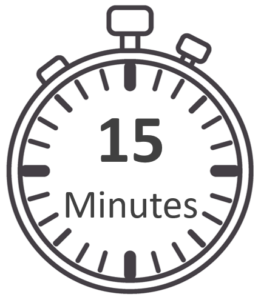Now we have come to the meat of your presentation, supporting your points.
A few common ways to support your points include:
- Anecdotal evidence: essentially telling a story or offering a case study—make sure they are relevant!
- Empirical evidence: research and statistics
- Logical: reasoning based on facts
- Demonstration: show how something works
You can combine supports as time allows. A useful approach that I use quite often is to combine anecdotal support (telling a story) with one other type of support. If your presentation ends up going longer than you anticipated, you can always cut out a point.
Depending on how long your presentation needs to be, you can have subpoints for each of your main points, but because every subpoint needs to have supporting content, you may not have time to create subpoints. At the very least, have at least one type of support for each of your main points.
Here is an example of supporting points for a longer presentation of about 30-45 minutes:
Main Point 1: Public speaking skills are important for engineers
Sub point: Communication skills are critical for career advancement
Support: Research on executives valuing communications skills in employees
Support: Examples: project presentation, clarifying issues, interviewing, etc.
Sub point: Poor communication can lead to poor results (or disaster!)
Support: PMI study: Poor communication leads to project failure 1/3 of the time
Support: Challenger disaster (example)
Main Point 2: Public speaking can be challenging for engineers
Sub point: Engineers can overwhelm audiences with technical details
Support: Examples of overly technical PowerPoint
Support: Simple is better (evidence)
Sub point: Engineers can find it challenging to engage with the audience
Support: “Just the facts, Ma’am” approach is boring (research)
Support: Perfection is overrated (demonstration)
Main Point 3: Opportunities to improve public speaking skills
Sub point: opportunities to speak at work and conferences
Support: Ways to speak more at work (list)
Support: Ways to speak at conferences (list, example)
Sub point: opportunities to learn and practice public speaking skills
Support: Online and in-person classes, books
Support: Toastmasters (+ personal testimony)
This is the fifth of 9 posts with the steps to take plus 10 delivery tips to be ready in an hour to “wow” your audience! The steps only take 50 minutes, which gives you time to read the information before doing the step.
The course includes the material in the 9-part post sequence, plus worksheets for each step, and brief video instructions from me!




